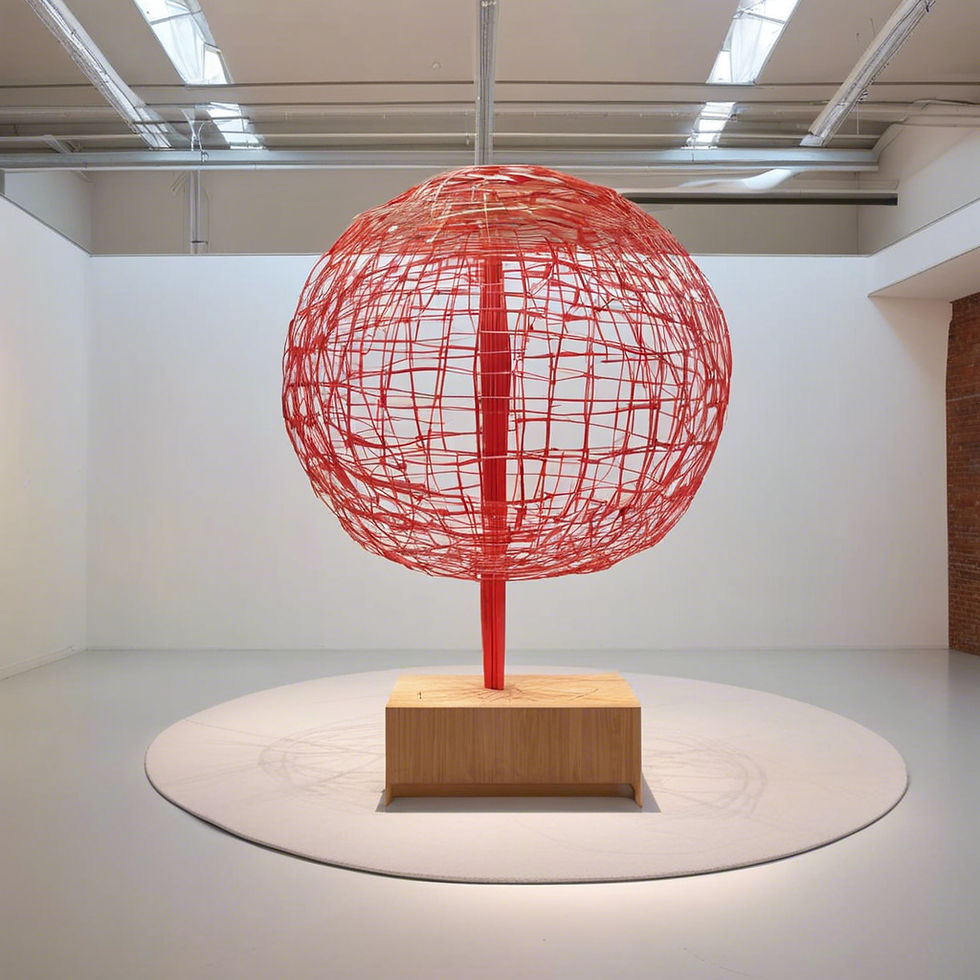Dissecting Postmodernism in Contemporary Art
- Ahmed Kheder

- Jun 30, 2024
- 4 min read
Updated: Sep 29, 2024
Postmodernism, a term frequently encountered in discussions of contemporary art, emerged as a critical response to the ideals of modernism, challenging its narratives, techniques, and theoretical frameworks. This cultural movement has had a profound impact on contemporary art, reshaping how artists conceptualize and produce their work. This article delves into the core principles of postmodernism, its evolution, and its manifestations in contemporary art.
Postmodernism in Contemporary Art
Origins and Core Principles of Postmodernism
Postmodernism arose in the mid-to-late 20th century, a period marked by significant social, political, and technological changes. As a reaction against modernism, which emphasized ideals of progress, universality, and the pursuit of absolute truth, postmodernism questioned these grand narratives. It proposed that truth is subjective, knowledge is fragmented, and reality is constructed through language and cultural contexts.
Key principles of postmodernism include:
Pastiche and Parody: Postmodern artists often employ pastiche, blending multiple styles and genres, and parody, critiquing or mocking existing conventions. This approach reflects the belief that originality is a myth, and all creative works are inherently intertextual.
Irony and Playfulness: A significant departure from the earnestness of modernism, postmodernism embraces irony and playfulness. Artists use humor and wit to undermine seriousness and to expose contradictions and inconsistencies in societal norms.
Fragmentation: Rejecting linearity and coherence, postmodern art often features fragmented narratives and disjointed structures. This mirrors the complexities and ambiguities of contemporary life, challenging the viewer to find meaning in chaos.
Hyperreality: Influenced by Jean Baudrillard's concept of hyperreality, postmodernism blurs the line between reality and simulation. Artworks often reflect a world where media representations are indistinguishable from real-life experiences.
Pluralism and Diversity: Postmodernism celebrates diversity and multiplicity, advocating for the inclusion of marginalized voices and alternative perspectives. It opposes the homogenizing tendencies of modernism, embracing a more inclusive and varied cultural discourse.
Evolution of Postmodernism in Contemporary Art
The influence of postmodernism on contemporary art is profound and multifaceted. As it evolved, postmodernism adapted to new cultural and technological landscapes, continually challenging and redefining artistic practices. Here are some key developments:
Deconstruction of High and Low Culture
One of postmodernism's notable contributions is the dismantling of the hierarchical distinction between high art and low culture. Contemporary artists freely incorporate elements from popular culture, mass media, and everyday life into their work. For instance, Jeff Koons' sculptures draw from kitsch aesthetics, while Andy Warhol's iconic Campbell's Soup Cans elevate commercial imagery to the status of fine art.
Appropriation and Remix Culture
Appropriation, the act of borrowing or reusing existing images and objects, is a hallmark of postmodern art. Artists like Sherrie Levine and Richard Prince challenge notions of authorship and originality by recontextualizing works of art and media images. This practice resonates with the broader remix culture in digital media, where sampling and remixing are commonplace.
Digital and Multimedia Art
The advent of digital technology has expanded the possibilities of postmodern art, leading to the proliferation of multimedia and interactive works. Artists like Nam June Paik and Laurie Anderson have pioneered the use of video, performance, and installation to create immersive experiences that defy traditional artistic boundaries.
Conceptual Art and Institutional Critique
Postmodernism has also influenced the rise of conceptual art, where the idea behind the artwork takes precedence over its physical form. Artists like Sol LeWitt and Yoko Ono emphasize the intellectual engagement of the viewer. Additionally, institutional critique, exemplified by the works of Hans Haacke and Andrea Fraser, scrutinizes the power structures and commercial interests within the art world itself.
Globalization and Transcultural Influences
In the context of globalization, postmodernism has facilitated a cross-cultural exchange of ideas and practices. Contemporary artists draw inspiration from diverse cultural traditions, creating hybrid forms that reflect global interconnectedness. For example, the works of Yinka Shonibare explore postcolonial themes through a fusion of African and European artistic elements.
Manifestations of Postmodernism in Contemporary Art
To illustrate the impact of postmodernism on contemporary art, let's examine a few notable examples:
Barbara Kruger: Known for her bold text-based works, Kruger combines imagery and provocative slogans to critique consumerism, gender politics, and media culture. Her use of red, black, and white typography evokes the aesthetics of advertising, subverting its messages for critical reflection.
Damien Hirst: Hirst's works often confront themes of mortality and commodification. His use of unconventional materials, such as preserved animals and pharmaceuticals, challenges traditional notions of beauty and value in art.
Ai Weiwei: As an artist and activist, Ai Weiwei's installations and sculptures address human rights, freedom of expression, and the impact of globalization. His use of readymade objects and cultural artifacts critiques political and social issues on a global scale.
Cindy Sherman: Sherman's photographic series feature herself in various roles and identities, exploring the construction of identity and the influence of media on self-perception. Her work exemplifies postmodernism's fascination with simulacra and the fluidity of identity.
Conclusion
Postmodernism has indelibly shaped contemporary art, fostering a diverse and dynamic landscape where boundaries are fluid, and conventions are constantly challenged. By embracing irony, fragmentation, appropriation, and pluralism, postmodern artists offer critical insights into the complexities of contemporary life. As the cultural and technological contexts continue to evolve, postmodernism remains a vital and influential force, pushing the boundaries of artistic expression and redefining our understanding of art in the modern world.




留言